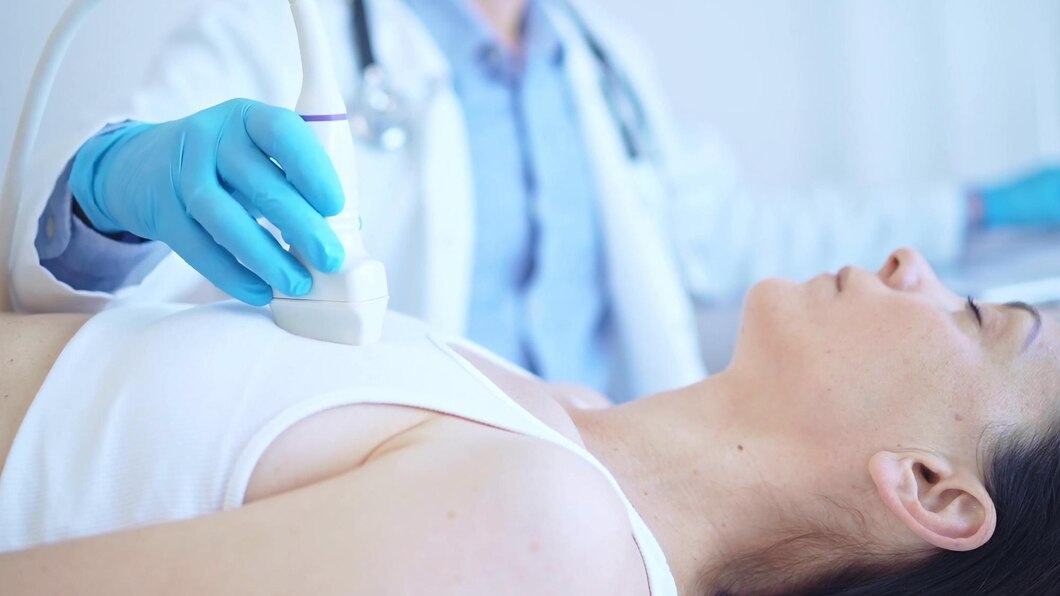Understanding the importance of breast ultrasound can be vital for maintaining breast health. This non-invasive method provides insights into breast tissue, helping to detect any abnormalities early. While breast ultrasound isn’t usually the first line of screening, it offers valuable details that other tests might miss. For many, this procedure is straightforward and safe, playing an essential role in preventive health strategies. By knowing what to expect, individuals can prepare better, enhancing the procedure’s accuracy and benefits. Let’s explore how breast ultrasound can be a crucial part of maintaining breast health.
Introduction to Breast Health and Ultrasound
Breast health is a significant concern, particularly in countries like India, where awareness campaigns are vital. With the rise in breast cancer cases, addressing the importance of early detection is more critical than ever. In India, breast cancer is one of the leading causes of cancer among women, highlighting the urgent need for effective screening tools.
Regular screenings can dramatically improve outcomes. Breast ultrasound is a crucial tool in early detection efforts. It helps in identifying potential issues before they escalate into severe conditions. Early detection provides better treatment opportunities and increases survival rates significantly.
Moreover, breast health awareness ensures women are informed about available resources and the importance of regular check-ups. Breast ultrasound forms part of a strategic approach to manage breast health proactively, using technology to empower individuals with knowledge and preventive steps.
What is a Breast Ultrasound?
Breast ultrasound is a medical test where sound waves produce images of the inside of the breast. Unlike mammograms, which use X-rays, breast ultrasound relies on sound waves, making it a safe option for many.
It’s primarily used to evaluate breast abnormalities that were detected through physical exams or mammograms. For instance, it can help distinguish between fluid-filled cysts and solid masses.
While mammograms are common, breast ultrasound can offer additional clarity, especially in dense breast tissues. It serves as a diagnostic aid, providing detailed images for more accurate evaluation. This non-invasive approach enhances the diagnostic process without exposing patients to radiation, making it a preferred option in various scenarios.
Preparing for Your Breast Ultrasound
Getting ready for your breast ultrasound involves a few simple steps. First, wear comfortable clothing that’s easy to remove from the waist up. It’s also advisable to leave jewelry at home, as it might interfere with the process.
Healthcare professionals usually provide guidance, which is crucial to follow. Instructions may include avoiding lotions, powders, or deodorants on the day of the exam. These substances can affect the accuracy of the images. Following these steps aids in obtaining precise results, making the process smoother and more effective.
The Ultrasound Procedure: What to Expect
During a breast ultrasound procedure, you’ll be asked to lie down comfortably. A sonographer, who performs the test, applies a gel on the breast to ensure sound waves pass through effectively.
The machine’s transducer is then moved over the skin to capture images. The equipment used produces no radiation, offering a safe environment for imaging.
Throughout the procedure, the sonographer might ask you to change positions to get clearer images. The process is usually quick, taking about 15-30 minutes, and generally painless, making it ideal for frequent check-ups without discomfort.
Post-Ultrasound Considerations
After your breast ultrasound, the results are interpreted by a radiologist. It’s important to discuss these findings with your physician, who can provide further advice and necessary steps.
Depending on the results, additional tests or follow-ups might be required. Either way, having this discussion ensures a clear understanding of your breast health. Continuing open communication with your healthcare provider is essential in maintaining ongoing checks and making informed decisions regarding your health.
Safety and Advantages of Breast Ultrasound
One of the primary benefits of a breast ultrasound is safety. It uses sound waves instead of radiation, which is a significant advantage for individuals concerned about exposure. This feature makes it a safe choice for women of all ages.
It’s particularly beneficial for those who might not be ideal candidates for mammograms, like pregnant women or those with sensitive breast tissues. The absence of radiation doesn’t compromise the effectiveness of the test. In fact, breast ultrasound can offer clearer images in certain situations, making it a preferred choice for many.
These advantages include a non-invasive nature, quick results, and the capacity to distinguish between types of breast masses, providing a detailed analysis without any risk of radiation, ensuring peace of mind.
Perfect for Younger Women and Dense Tissues
Mammograms are sometimes less effective for younger women and those with dense breast tissue. In these cases, a breast ultrasound proves to be advantageous.
Dense tissue can mask issues during a mammogram, whereas an ultrasound provides clearer images. Many younger women find breast ultrasound more comfortable and suitable.
In the Indian context, where structures can vary, the breast ultrasound offers clarity and peace of mind. Testimonials from users praise its accuracy and comfort, noting how it fits well into regular healthcare routines.
Role in Treatment Monitoring and Tracing Progress
Breast ultrasound is not only for initial screening but also plays a significant role in tracking treatment progress. For patients undergoing chemotherapy or other treatments, it offers a way to monitor changes over time.
The test allows physicians to assess how a tumor or mass is responding to treatment, providing valuable insights for adjusting care strategies. This ongoing monitoring ensures continuous attention to the patient’s progress, making sure treatments are effective and allowing for changes when necessary.
Conclusion and Call to Action
In summary, breast ultrasound stands as a vital component in the early detection and ongoing assessment of breast health. Its safety and non-invasive nature make it accessible and suitable for many.
Women are encouraged to engage in regular screenings and consultations, making use of available resources. Locate screening facilities or experts in your area to keep your health front and center.
With the increasing prevalence of breast cancer, let breast ultrasound guide you towards proactive health management. Stay informed and stay healthy.

